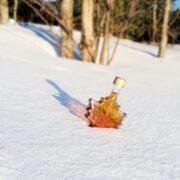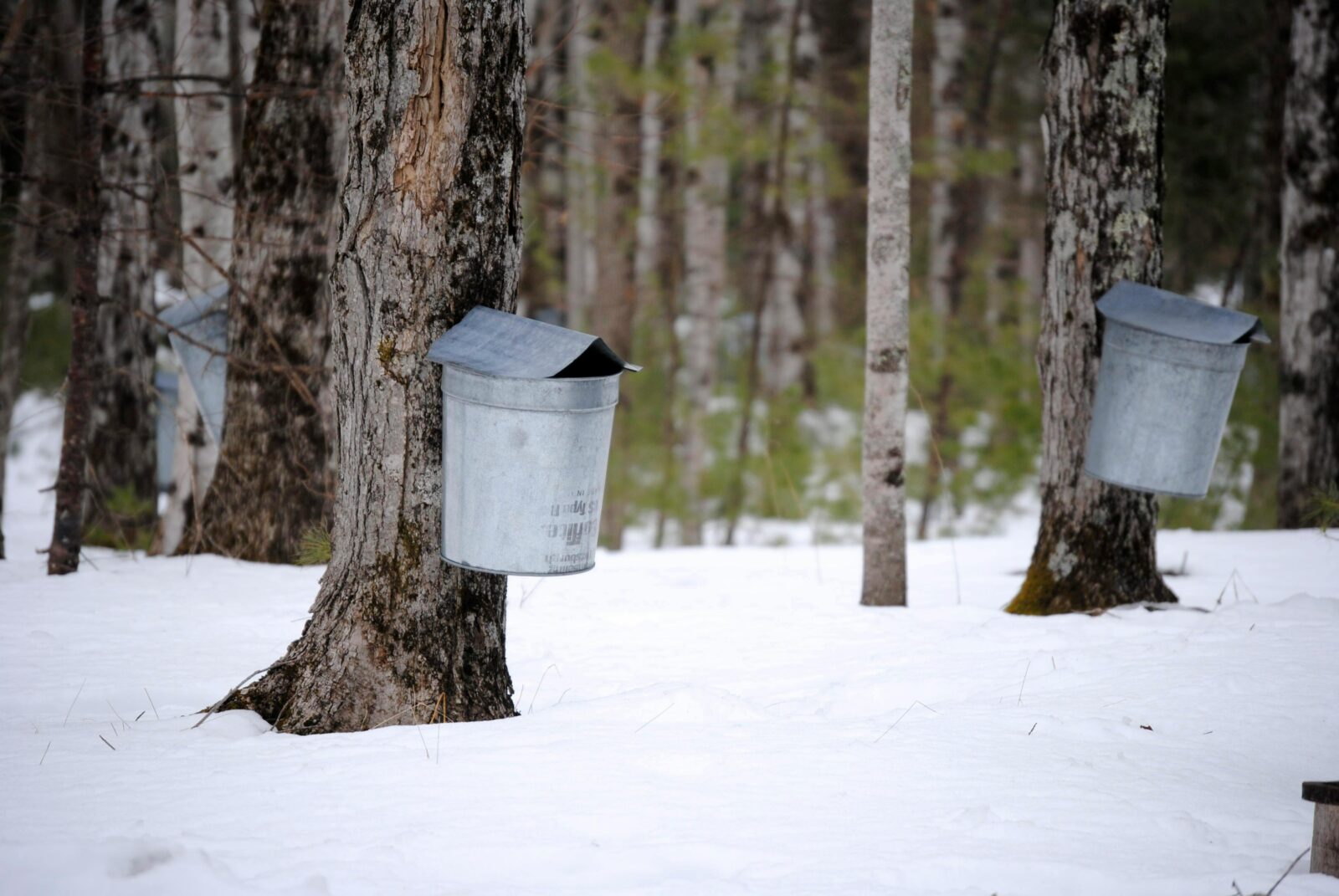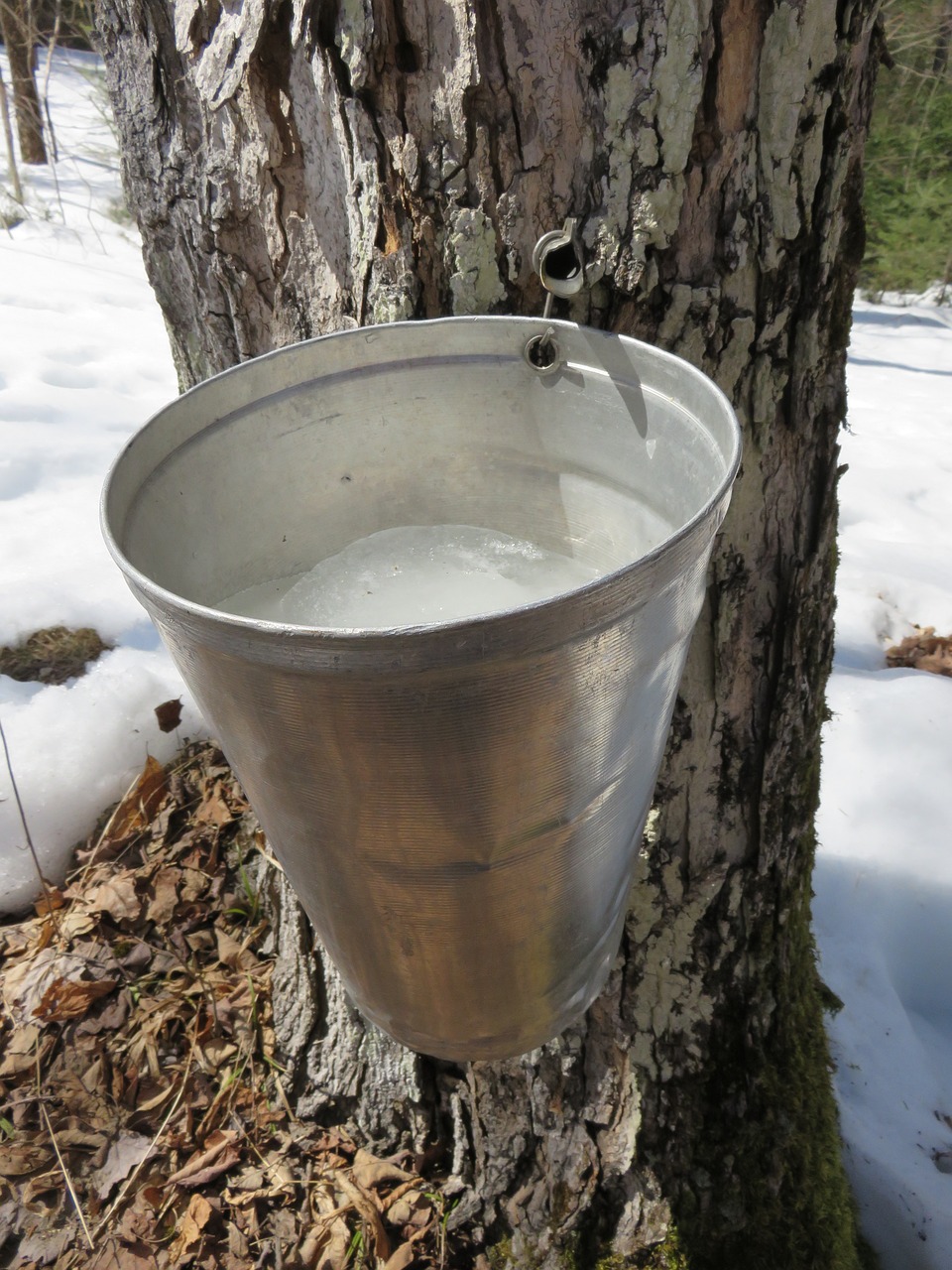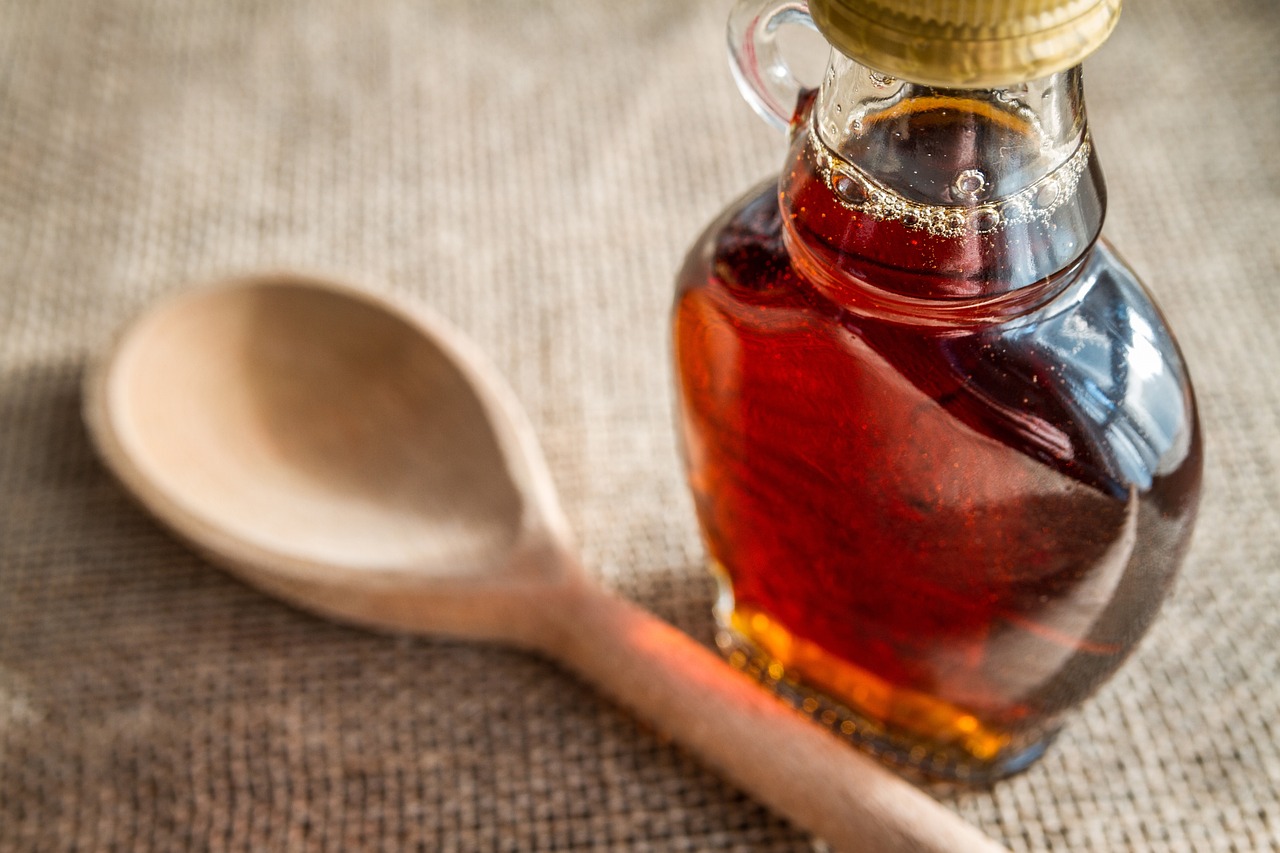SWEET WATER FROM OUR MAPLE TREES
Sugar shack season is here. Finally, we can enjoy maple products. As we all know, to make maple syrup, we have to boil the maple water collected from the trees, but do you know how a tree can produce this sweet liquid? Why don’t we market more the sweet water from other trees like willow or fir? Find out how this precious liquid is formed, and how we can take advantage of temperatures to make it flow.
Plant sugar accumulation
It all starts with photosynthesis. Plants use the sun’s rays as a source of energy, they also use CO2 and water. For most plants, photosynthesis takes place in the leaves. These have small openings, called stomata, which absorb CO2 from the air. The sun’s energy, stored by the plant, is used to transform CO2 into a larger molecule, glucose.
Hint: glucose is a sugar, so we’re getting closer to our goal! Glucose is also a basic molecule for building plant structures. All the glucose produced by photosynthesis in a single day will be transmitted to the various regions of the plant by its conductive vessels, the equivalent of the bloodstream.
The glucose distributed throughout the plant can be used to build new leaves, branches or roots. The surplus will be stored as starch in the roots as a reserve for future needs… It could also be used to produce our maple syrup!
Maple water flow
Quebec is an ideal region for producing maple syrup. A cold winter followed by a milder spring is essential for the flowing process. In winter, sub-zero temperatures freeze the water. When spring arrives, it thaws and the plant can once again bring water from the soil to it’s circulatory system . At the same time, the starch in the roots is broken down into glucose molecules. Water, glucose and other elements are then transported by conductive vessels throughout the tree, to build its new leaves, among other things.
Precisely, it’s warm enough during the day for the tree to expand. The resulting high pressure releases sugar-laden water when a cut is made in the trunk. Cold nights, however, cause the tree to contract, and the water stops flowing. [1][2] The plant also takes advantage of this to replenish the water in the soil. This daily alternation of cold and warmth is the secret to maple water flow.
Maple syrup, a special product
There are over 150 species of maple, but the sugar maple and red maple are mainly used for the commercial production of maple syrup [1]. Each species of maple has its own characteristic taste. Quite simply, most of other species don’t taste good when water is turned into syrup. The same is true of other trees, such as oak, alder, poplar and beech, but, did you know that yellow birch is also used to make a delicious syrup?
In all Quebec’s territory, the sugaring season runs from late February or early March to late April or early May. This means that Quebec has between eight and ten weeks of maple sap flow. However, no tree flows during this entire period. A maple grove only releases maple water for 20 to 25 days. Each tree begins to flow when temperatures are favourable, depending on its geographical position. For example, maple groves in southwestern Quebec, like those in the Montérégie region, often finish their season before those in the north even begin. [1]
Interestingly, it takes about 40 liters of maple water to produce one liter of syrup. In 2023, Quebec produced 9.4 million liters of syrup. That means about 370 million liters of maple water were harvested, or about 118 Olympic-sized swimming pools! [3]
Hugo owns a maple grove, and is himself an amateur maple syrup producer. Last year, we were able to taste the fruits of his labor during our team day. As for Daniel, every year he produces syrup from a silver maple and a Norway maple. Amazing, isn’t it? And what about you, are you going to sweeten your beak at the cabin?
[1] Producteurs et productrices aéricoles du Québec. (2024). Les étapes de production du sirop d’érable. [Online]. https://ppaq.ca/fr/production-acericole/production-du-sirop-erable/
[2] Québec Science – Encyclo. (2018). Ça coule !. [Online]. https://www.quebecscience.qc.ca/14-17-ans/encyclo/ca-coule/
[3] La presse canadienne – La Presse. (2023). Chute marquée de la production de sirop d’érable en 2023. [Online]. https://www.lapresse.ca/affaires/2023-12-12/chute-marquee-de-la-production-de-sirop-d-erable-en-2023.php#:~:text=%C3%80%20lui%20seul%2C%20le%20Qu%C3%A9bec,relev%C3%A9%20au%20Qu%C3%A9bec%20depuis%202018.






